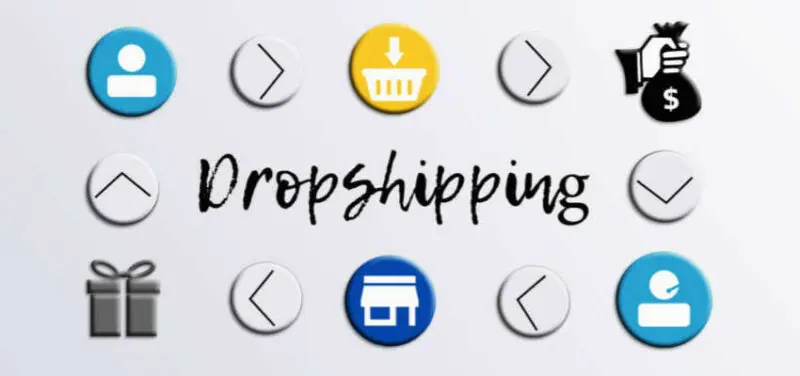How Can a Dropshipping Store Compete With Amazon in 2024?
Dropshipping can be a lucrative business in 2024, but competing with Amazon can be a daunting task. To start dropshipping on Amazon, you need to create an Amazon seller account. Unlike FBA and dropship, Amazon allows dropshipping without the need for FBA. However, there are cons for dropshipping on Shopify or Amazon such as limited product range, Amazon fees, and deliverability issues. But dropshipping allows sellers to sell on Amazon and don’t need holding inventory. To compete with Amazon, one must focus on offering unique products, providing excellent customer service, and optimizing listings for Amazon’s marketplace. It is important to understand the pros & cons of dropship in order to succeed in the Amazon.
Dropshipping is a business model that allows sellers to list and sell products without holding any inventory. In 2024, with the prevalence of e-commerce giants like Amazon dominating the market, competing as a store can pose significant challenges. Let’s explore how businesses can navigate the competitive landscape and thrive alongside Amazon.
What is Dropshipping Store and How Does it Work?
Dropshipping is a popular method for entrepreneurs to start their own e-commerce businesses without having to hold inventory. Essentially, allows sellers to sell products on platforms like Amazon that don’t need actually holding the inventory or You can looking for Private Dropshipping Agent for fulfillment orders. For example, if you have an Amazon store, you can list a product on Amazon and when a customer purchases it, you can then order the product from a supplier, who will ship it directly to the customer. Amazon Fulfillment provides a platform through its Amazon Seller Central where sellers can use dropshipping platform to sell products on Amazon without actually holding the inventory.
Many people wonder about the profitability of Amazon dropshipping business, as there are policies and fees that come with using Amazon as a platform. Amazon charges fees for using their marketplace and requires sellers to follow dropshipping policies. Additionally, there is a hot debate on Amazon, as Amazon takes care of the shipping and handling for sellers, while dropshipping allows for more flexibility and control over the products being sold. Successful on Amazon ultimately depends on the seller’s strategy and execution.
Dropshipping, in essence, is a retail fulfillment method where sellers do not keep the products they sell in stock. Instead, they partner with dropshipping suppliers who handle inventory and shipment. This business model has gained popularity due to its low barrier to entry and minimal upfront costs, making it an attractive option for aspiring entrepreneurs.

Definition of Dropshipping Store
Dropshipping is a type of supply chain management where the seller does not need to keep goods in stock. Instead, when the seller sells a product, they purchase the item from a third party and have it shipped directly to the customer.
Dropshipping Process Overview
The processing typically involves the seller listing products on their online store, receiving orders from customers, and then forwarding these orders to the supplier for fulfillment. The supplier then ships the product directly to the customer, allowing the seller to earn a profit without handling the inventory.
Benefits of Dropshipping Store
Dropshipping offers various benefits, including low startup costs, the ability to sell a wide range of products without inventory risk, and flexibility in managing the business from anywhere. It also enables sellers to test multiple products and niches without significant financial commitment.
Challenges of Dropshipping Store on Amazon Dropship
Dropshipping on Amazon can be a profitable venture, but it comes with its fair share of challenges. One of the top challenges is the endless competition from other sellers on Amazon. Amazon requires sellers to list products on the Amazon marketplace without including Amazon products. Additionally, successful on Amazon depends on starting a dropshipping business through an Amazon seller central account. Amazon and can be tricky to followup on, as Amazon handles shipping and customer service. Despite these obstacles, with the right strategies and perseverance, building a successful business on Amazon is achievable.
Dropshipping on Amazon differs from a dropshipping business on Amazon in terms of Amazon fulfilling the orders through Amazon FBA and dropshipping work being handled by the seller. While Shopify stores offer more control, Amazon’s dropshipping model is more streamlined. However, Amazon offers limited support for dropshipping, making it more challenging for sellers to achieve success on Amazon. Additionally, navigating Amazon’s strict policies and regulations can be a cold process for newcomers in the Amazon business.
When business on Amazon, sellers face unique challenges, particularly when competing with Amazon’s own product offerings. Amazon’s Fulfillment service also presents a tough competition to traditional dropship models.
Competition with Amazon’s Own Products
Amazon’s vast product catalog and brand presence can make it challenging for dropshipping businesses to stand out. Customers are often inclined to trust Amazon’s own products over third-party sellers, posing a significant hurdle for tores.
Amazon FBA vs. Dropshipping
Fulfillment (FBA) allows sellers to store their products in Amazon’s fulfillment centers where Amazon manages storage, packing, and shipping. This gives Amazon sellers an edge in terms of fast and reliable shipping, a key factor in customer satisfaction.
Limited Control Over Shipping and Customer Experience
Dropshipping can lead to limited control over shipping times and product quality, as sellers rely on suppliers to fulfill orders promptly. Maintaining a consistent level of quality and customer experience is crucial to building trust and loyalty among buyers.
Strategies to Compete With Amazon Fba in 2024
Dropshipping can be a profitable business, especially when done on a platform like Amazon’s Dropshipping Business. However, competing with Amazon may require some strategic thinking. One strategy could involve list products on Amazon without having to drop ship on Amazon. This can help avoid the high fees associated with dropshipping on the platform. Another approach could be to start selling on Amazon by leveraging your own amazon account and building a loyal customer base. Ultimately, success in amazon dropshipping depends on finding a way to stand out from the competition and provide value to customers.
Dropshipping is legal and amazon dropshipping profitable can be a great way to earn passive income. However, the key is to understand the pros and cons of dropshipping vs other business models. With the right strategy and execution, amazon dropshipping is a business that can be profitable in the long end. To get started with dropshipping, it’s important to research the market and find niche products that have high demand. By carefully selecting your dropshipping product, you can increase your chances of success in this competitive e-commerce landscape.
To compete with Amazon, dropshipping’s stores need to adopt strategic approaches that differentiate their offerings and enhance customer trust and engagement.
Focus on Niche Products
By focusing on niche products that appeal to specific customer segments, dropshipping’s stores can carve out a dedicated customer base and reduce direct competition with Amazon’s broader product range.
Enhance Customer Service and Branding

Providing exceptional customer service, personalized experiences, and building a strong brand identity can help dropshipping’s stores establish a loyal customer following and differentiate themselves from competitors.
Utilize Social Media Marketing and Influencers
Harnessing the power of social media marketing, influencer partnerships, and content creation can help dropshipping’s stores reach a wider audience, drive traffic to their online store, and boost sales.
Tools and Software for Dropshipping Stores
Utilizing the right tools and software is essential for the success of dropshipping’s stores, enabling efficient operations and streamlined processes.

Email Marketing Tools for Customer Engagement
Implementing email marketing tools for lead generation, customer engagement, and retention can help dropshipping’s stores nurture relationships with their audience and drive repeat sales.
Dropshipping Supplier Directory Platforms
Utilizing dropshipping supplier directory platforms can facilitate the discovery of reliable suppliers, ensuring product quality and timely order fulfillment for a seamless customer experience.
Optimizing Product Listings on Amazon
Optimizing product listings on Amazon with relevant keywords, high-quality images, and compelling product descriptions is crucial for improving visibility and attracting potential customers to the store.
Pros and Cons of Amazon Dropshipping in 2024
Dropshipping on Amazon can be a lucrative business venture in 2024, as the e-commerce giant continues to dominate the online retail market. One of the main pros of Amazon dropshipping is the potential for high profits with low overhead costs. Sellers can list products on the platform without holding inventory, saving on storage and shipping expenses. Additionally, Amazon provides a massive customer base, offering exposure to millions of potential buyers worldwide. However, there are also cons to consider. Competition among sellers can be fierce, making it challenging to stand out and attract customers. Moreover, stringent rules and policies set by Amazon can make it difficult to operate a successful dropshipping business on the platform.
When considering dropshipping on Amazon in 2024, it’s important to weigh the potential benefits and risks associated with this business model.
Potential Profits and Risks of Amazon Dropshipping Store
While Amazon dropshipping offers the potential for high profits and access to a vast customer base, it also comes with risks such as intense competition, changing policies, and fluctuating marketplace dynamics.
Comparing Fulfillment by Amazon (FBA) with Dropshipping Store
Comparing Fulfillment by Amazon (FBA) with traditional dropshipping models can help sellers evaluate the operational efficiency, costs, and scalability of each approach to determine the best fit for their business.
Evaluating the Overall Viability of Dropshipping Store on Amazon
Dropship on Amazon can be a lucrative business model for those looking to start an online store without the hassle of holding inventory. However, it is important to evaluate the overall viability of dropshipping on Amazon before diving in. While some sellers find success and make substantial profits, others struggle to compete with the fierce competition and fluctuating marketplace. Researching niche markets, understanding Amazon’s fees and policies, and developing a solid marketing strategy are all crucial elements in determining whether Amazon dropshipping can be profitable in the long run.
Assessing the overall viability of dropshipping on Amazon involves considering factors such as profit margins, product selection, customer acquisition costs, and long-term sustainability to make informed business decisions.

Private Agent for Dropshipping Success